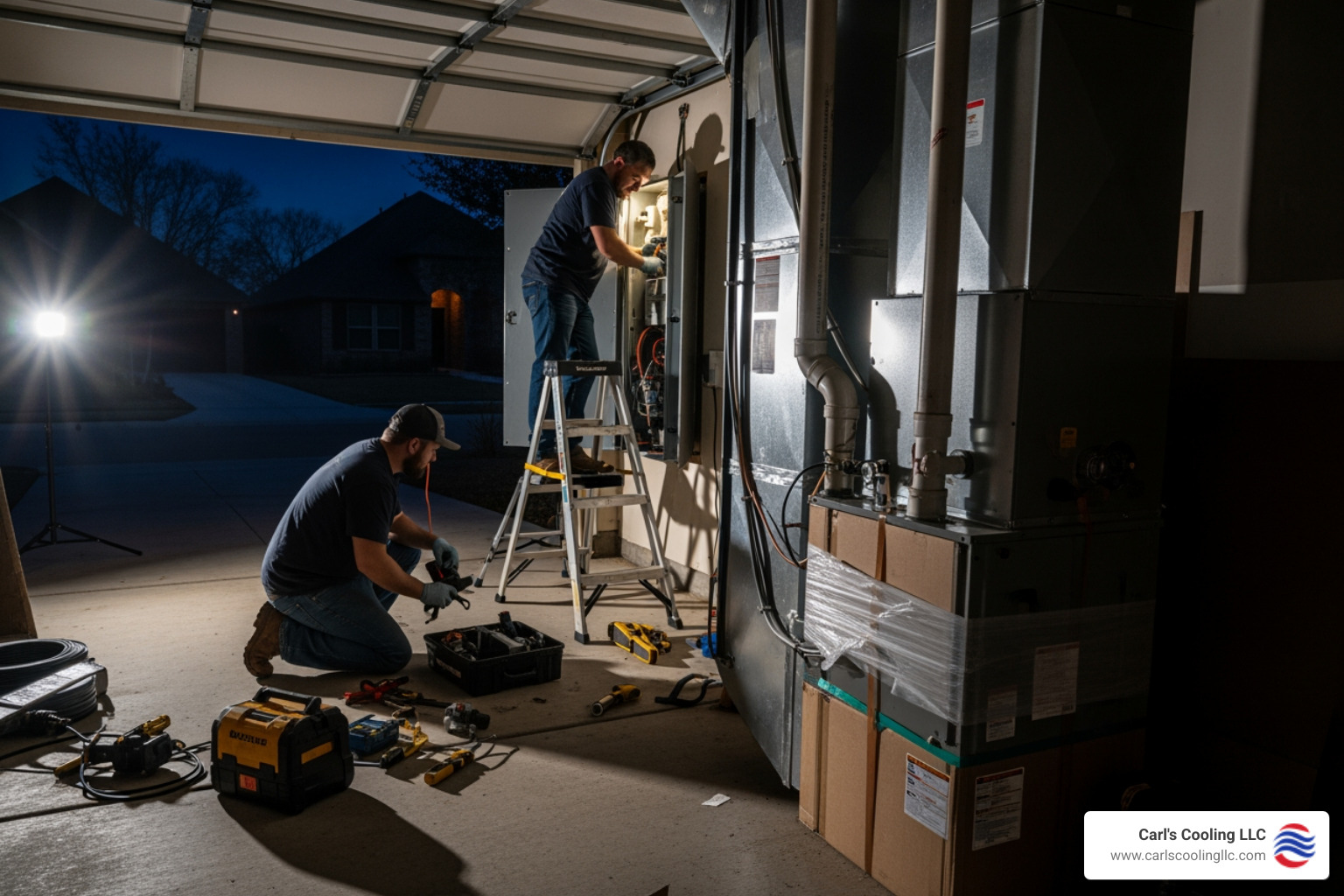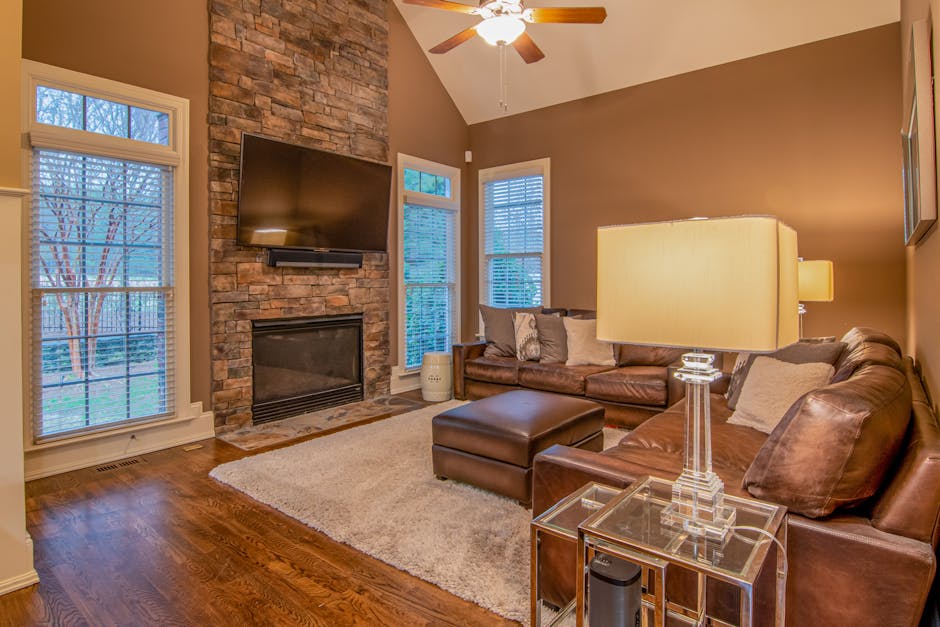Middle of the summer in Willis is not the time to find out that your AC system isn’t cutting it. When temperatures stay high for days, a system that’s too small, old, or poorly installed won’t keep up. That can make everyday living really uncomfortable, especially when the inside of your home starts to feel just as warm as the air outside. Whether you’re upgrading your existing unit or installing one for the first time, taking the right steps beforehand can make all the difference.
Installing a new AC system is more than just picking a unit and scheduling the work. There are real consequences to skipping the details. Without the right planning, you may end up with higher monthly bills, uneven temperatures, or a system that wears out too soon. Before making the jump, you’ll want to look at your home’s cooling needs, understand what systems match those needs, and make sure the setup is done correctly the first time.
Understanding Your Cooling Needs
Each home in Willis is different, so the cooling approach needs to match the layout, size, and how the home holds temperature during warmer months. That’s why choosing an AC system starts with an honest look at what’s needed to cool your space without overworking the equipment.
When it comes to selecting the right AC size and capacity, these factors play a big role:
- Square footage of your home
- Ceiling height and room layout
- Amount of sunlight entering the home
- Existing ductwork design (if any)
- Quality and thickness of insulation
- Number of windows and how well they’re sealed
If the AC system is too large, it may cool too fast and won’t run long enough to control humidity. If it’s too small, the system may run constantly, working harder than it should. That’s why matching the system capacity to the cooling load is one of the most important steps in this process.
Energy efficiency is another piece of the puzzle. Look at systems with high SEER (Seasonal Energy Efficiency Ratio) ratings. A good SEER rating helps lower energy consumption during peak cooling days. Even though a more efficient unit might have a higher upfront cost, it can keep long-term energy bills lower and reduce the overall strain on the system.
Some homeowners in Willis move into houses with older AC systems and assume they just need a replacement of the same type and size. But loads can change over time. New insulation, additions to the house, or even shaded landscaping can affect how much cooling power your home actually needs. A proper load calculation done by trained professionals can point you in the right direction from the start.
Choosing the Right AC Type for Your Home
Once you understand what kind of cooling your home needs, the next step is figuring out what type of system best fits those needs. Not every house needs a large central air system. Sometimes, smaller setups work better depending on the layout or specific use of rooms.
Here are a few popular AC types and how they stack up:
1. Central Air Conditioning
- Great for cooling the entire home
- Can provide consistent temperatures
- Works best when ductwork is done correctly
2. Ductless Mini-Split Systems
- Good for homes without ductwork
- Zones can be controlled individually
- Quiet performance and energy-efficient options
3. Window Units
- Best for small spaces or single rooms
- Easy to install and remove
- Not ideal for long-term or whole-house cooling
For homes in Willis with older ductwork, or none at all, a ductless system might hit the right balance between efficiency and flexibility. On the other hand, homes already fitted with ducts may keep their installation simpler with a central AC system.
Think about how each part of the home is used. If certain rooms stay empty for most of the day, zoned cooling with a mini-split may offer better temperature control and energy use. If the home only needs cooling during the summer months, window units may be an affordable short-term fix, although they don’t offer the same lifespan or performance as a larger system.
Proper installation matters just as much as the system type. And not all homes in Willis are shaped or built the same way. That’s why working with trained technicians who can match the system to the home layout helps avoid regrets down the road.
The Installation Process
Once you've selected the right system for your home in Willis, the next step is to make sure the installation process is handled the correct way. A good installation starts well before any equipment enters the home. It begins with a detailed evaluation of the space, layout, and any specific challenges tied to your property. Skipping this step often leads to poor performance or long-term issues.
Before installation takes place, our professionals go through a checklist to get everything ready:
- Inspect existing ductwork (if any)
- Measure airflow needs in each area of the home
- Identify any insulation or sealing gaps
- Check electrical systems for compatibility
- Develop a plan for safe placement of equipment
Each of these tasks helps set the foundation for a solid install. Proper sizing and setup are key. If the system is not matched to the physical environment of the house, it can result in rooms that won’t stay cool, short cycling, or strain on the system that shortens its lifespan.
During installation, our technicians work carefully to place, anchor, and connect each part of the unit according to manufacturer specs and local building codes. The placement of outdoor units matters, too. They need open airflow and protection from blocked vents or loose debris. Inside, vents must be positioned to deliver even cooling, and drain lines need to be clear to avoid water buildup.
Many homeowners in Willis make the mistake of choosing the lowest bid or trying to piece together equipment without proper training. But installing a central or ductless system isn’t like setting up an appliance. It’s a complex process that affects your home’s safety and comfort for many years. That is why having trained professionals on the job is the safest route. Letting experienced technicians handle it from start to finish protects the system and your wallet from future problems.
After-Installation Care and Routine Maintenance
Once your new AC system is up and running, that doesn’t mean the job is finished. Over time, every AC system needs maintenance to stay efficient and dependable. Without ongoing care, even brand-new equipment can break down sooner or develop issues that are hard to spot early.
Here are a few simple steps to help maintain your new AC setup:
- Replace air filters every 1 to 3 months depending on dust and usage
- Keep outdoor units clear of leaves, grass clippings, or dirt
- Check that vents aren’t blocked by furniture or curtains
- Inspect your thermostat settings and battery (if applicable)
- Monitor airflow and temperatures for sudden changes
While these tasks are good to keep in mind, they don’t replace a full inspection. A trained technician can catch things that might not be obvious, like refrigerant level imbalances, worn fan belts, or drainage problems. Scheduling a yearly check-up is one of the easiest ways to keep things running smoothly and avoid costly repairs down the road.
Routine service can also help maintain comfort levels through the hot months in Willis. If airflow drops off or rooms aren’t cooling properly, that’s usually a sign that something’s starting to go wrong inside the system. Having our professionals do a full system check gives homeowners peace of mind ahead of the season when they need cooling the most.
Keeping Cool in Willis with Expert Help
Setting up a proper AC installation means more than making sure the unit fits. It’s about taking care of the long-term comfort, efficiency, and function of your home in Willis. Choosing the wrong size, skipping the evaluation, or going with a system that doesn’t match your home’s design can lead to bigger issues later. Everything from strange noises to weak temperature control usually ties back to the original installation choices.
No matter the brand or model, how the system is installed and maintained is what determines performance and lifespan. When you work with trained technicians, you're getting more than just equipment. You’re getting a setup that fits well with your home, works as it should, and lasts well into the future.
Whether it's your first install or you're replacing outdated equipment, understanding each part of the process makes a big difference. From pre-install prep to routine check-ups, each piece plays a part in keeping your home cooled efficiently through the long, hot summer in Willis. Reliable performance doesn’t come by chance. It comes by doing the job the right way from the very beginning.
When your home needs dependable AC installation in Willis, trust the experienced team at Carl's Quality Cooling and Heating LLC to deliver high-quality workmanship and lasting comfort throughout the hottest months. For a quick estimate or to book a service visit, please contact us today.






